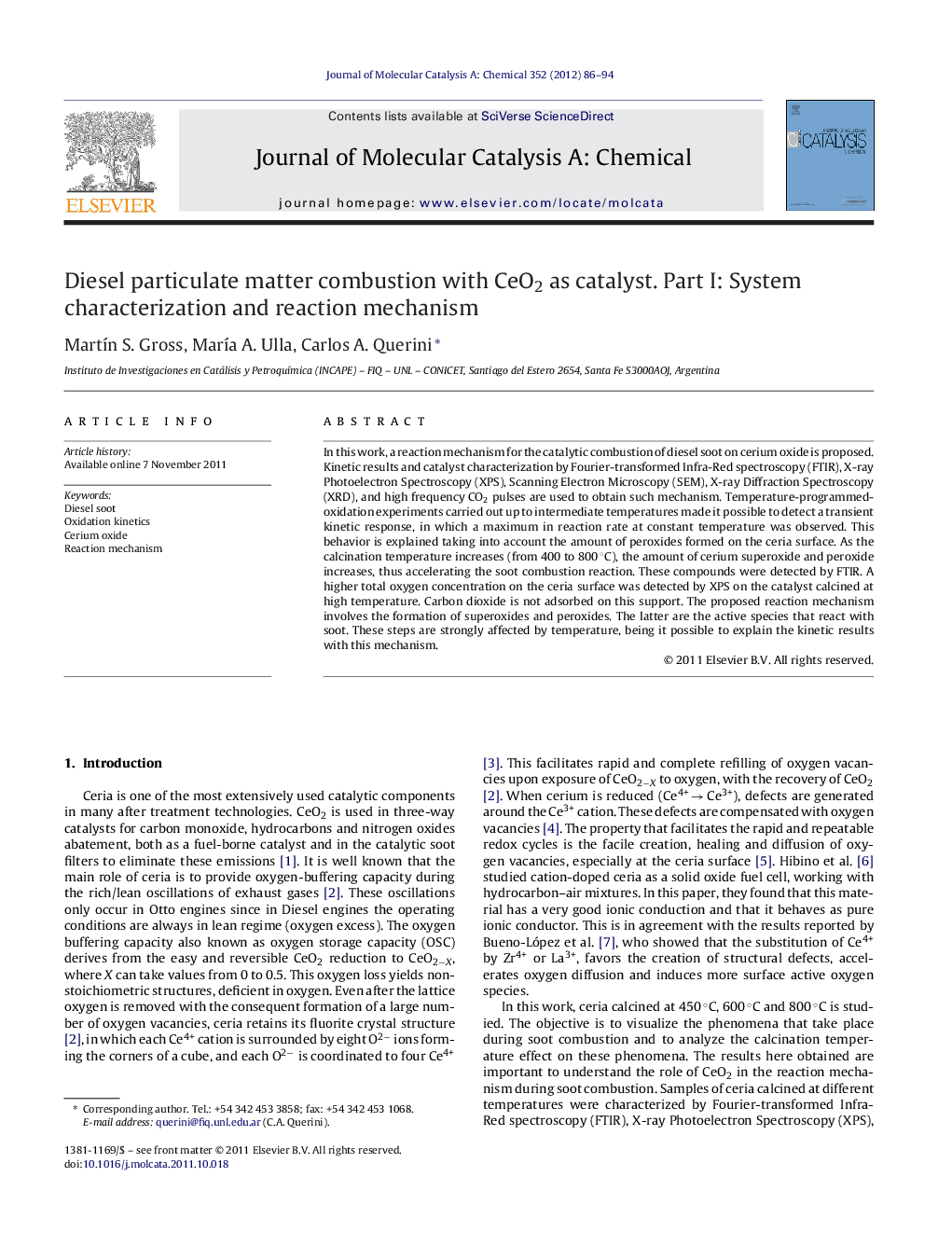| Article ID | Journal | Published Year | Pages | File Type |
|---|---|---|---|---|
| 66322 | Journal of Molecular Catalysis A: Chemical | 2012 | 9 Pages |
In this work, a reaction mechanism for the catalytic combustion of diesel soot on cerium oxide is proposed. Kinetic results and catalyst characterization by Fourier-transformed Infra-Red spectroscopy (FTIR), X-ray Photoelectron Spectroscopy (XPS), Scanning Electron Microscopy (SEM), X-ray Diffraction Spectroscopy (XRD), and high frequency CO2 pulses are used to obtain such mechanism. Temperature-programmed-oxidation experiments carried out up to intermediate temperatures made it possible to detect a transient kinetic response, in which a maximum in reaction rate at constant temperature was observed. This behavior is explained taking into account the amount of peroxides formed on the ceria surface. As the calcination temperature increases (from 400 to 800 °C), the amount of cerium superoxide and peroxide increases, thus accelerating the soot combustion reaction. These compounds were detected by FTIR. A higher total oxygen concentration on the ceria surface was detected by XPS on the catalyst calcined at high temperature. Carbon dioxide is not adsorbed on this support. The proposed reaction mechanism involves the formation of superoxides and peroxides. The latter are the active species that react with soot. These steps are strongly affected by temperature, being it possible to explain the kinetic results with this mechanism.
Graphical abstractCerium oxide is studied for diesel soot oxidation. The reaction mechanism is discussed, based on the effect that calcination temperature has on catalytic activity, combining kinetic and catalyst characterization results.Figure optionsDownload full-size imageDownload high-quality image (106 K)Download as PowerPoint slideHighlights► Soot oxidation on ceria occurs by a mechanism involving superoxides and peroxides species. ► Calcination temperature and operation temperature affect the concentration of these species. ► The mechanism explains the transient kinetic behavior.
